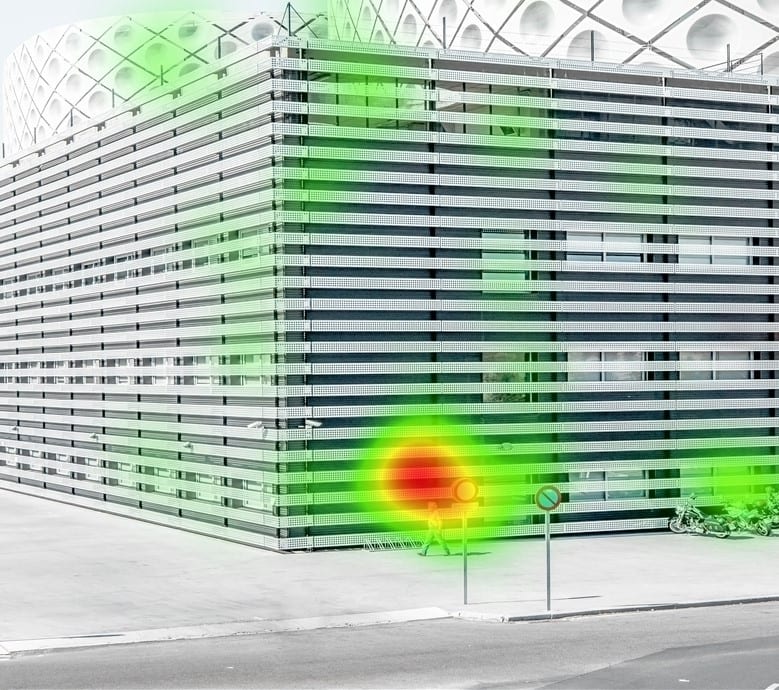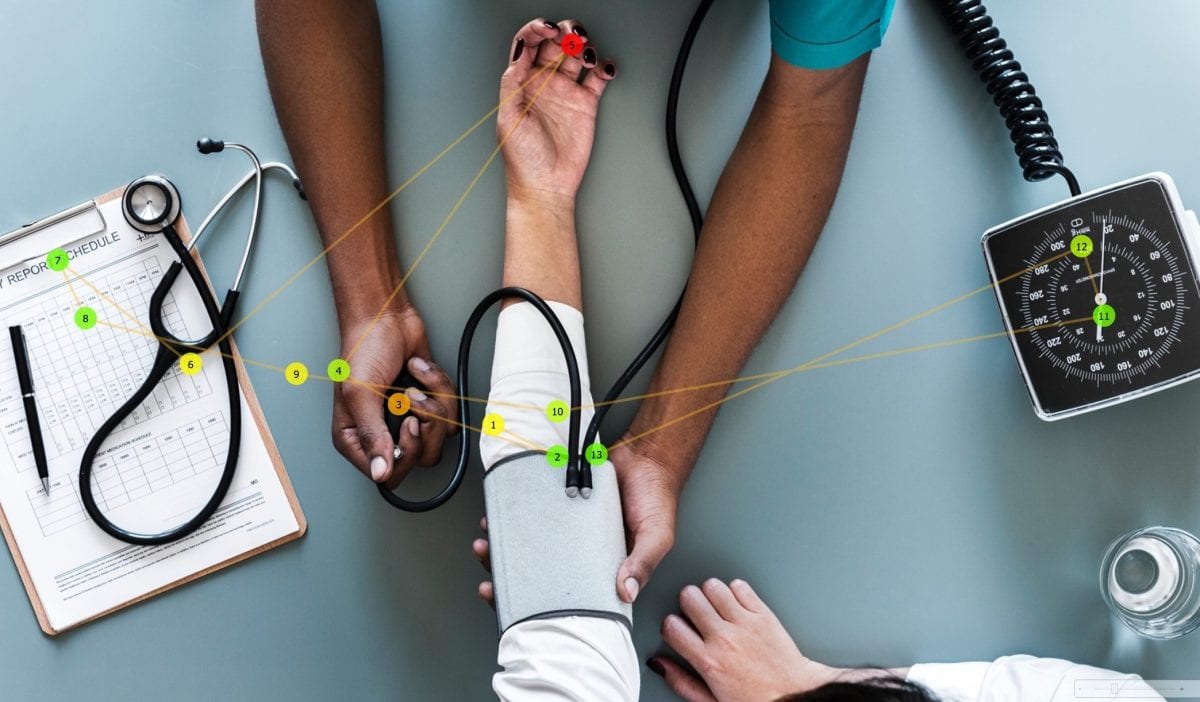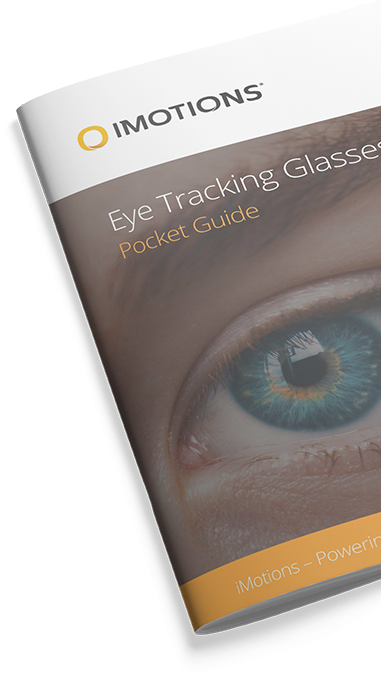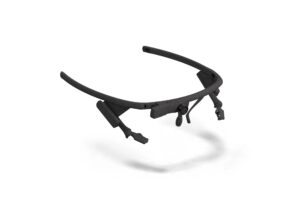Eye tracking technology has come a long way since its inception, and its potential for research and commercial applications continues to expand. As technology advances, so too do the capabilities of eye tracking, with new innovations constantly emerging. In this article, we will explore the future of eye tracking technology, including advancements in hardware and software, the incorporation of machine learning and artificial intelligence, and the potential for new applications in fields such as healthcare, education, and gaming. We will also discuss the ethical considerations surrounding the use of eye tracking and how they will shape the future of the technology. Readers will get a better understanding of the exciting possibilities and challenges that lie ahead for eye tracking technology by reading this article.
How eye tracking is changing the world
In recent years, eye tracking is changing the world as we know it, but it is actually an old technology. With around 100-150 years of history behind it (depending on where you draw the line; 1), its origins precede the invention of the plane (and if you’re feeling generous, the invention of the car too).
This means that the development of the technology has been a lengthy process, from which we are now starting to see the results. The work and innovation within this sphere have yielded cutting-edge technology that is beginning to shape our future.
The use of eye tracking devices is not only opening up new ways of solving problems, or obtaining new data, but also giving rise to entirely new fields of research. Below, we’ll go through five examples of how the future is being influenced by eye tracking technology and research.
Eye Tracking in Sports (and eSports)

Eye tracking studies have historically been carried out in pristine labs with tightly controlled conditions, but that has been changing in recent years. One of the areas in which the most dramatic shift has taken place is in the application of eye tracking for researching sports.
The first study that used eye tracking to investigate how athletes compared to non-athletes (2) used a set of static slides with participants seated throughout the session. Needless to say, things have changed since then.
Recent studies use eye tracking glasses to examine active, in-game play within a variety of sports, from basketball (3), to cricket (4), to cycling (5), and even karate (6). It might come as no surprise though that the sport investigated the most with eye tracking is football (7), something that we may see the impact of in the 2018 World Cup (8). While the application of eye tracking glasses has been tightly controlled in the research above, future improvements in technology could well make this an easier process.
Looking even further into the future, eye tracking is already being applied to a new branch of sports – the competitive playing of video games, otherwise known as eSports. Studies have investigated how expert players compare to novices, in much the same way that traditional sports have been examined (9, 10).
What’s clear from recent studies is that the use of eye tracking will continue to provide tractable and practical data across a range of sports, both in the real and virtual world.
Eye Tracking in Neuroarchitecture

Neuroarchitecture, or cognitive architecture, is an emerging field that provides an empirical basis for the design choices made by architects. Rather than settling for purely theoretical debates about best practices in design, research is showing the way, and guiding the creation of an actual evidence-based design (or buy the book here).
Researchers have used eye tracking alongside EEG to investigate participant responses to factors within the built environment such as ceiling height, room size, and lightness – critical components of architectural design (11). By understanding the fundamental attentional and cognitive reactions to buildings, research can guide better-resulting designs.
The approach of neuroarchitecture has also joined another emerging technology – that of VR (12). By creating a virtual representation of different proposed buildings, architects can quickly (and relatively cheaply) test responses, enabling them to choose the best design, rather than settling for more subjective opinions.
Pilot studies of design features are already yielding findings that can have a larger impact on how buildings are designed, from how to treat blank facades, to the use of people within architectural mockups. The future could well see more and more architectural proposals that are fueled by empiricism rather than convention.
See full range of eye trackers
Eye Tracking and Medical Treatment

Medical science has often been at the forefront of scientific developments – there is a clear impetus to continue to improve and innovate medical care in any way possible. While many innovations are centered around new drug or technology development (13), other research is looking at how to improve existing care.
Research has shown how eye tracking can help predict the performance and accuracy of interpretations made by nurses when assessing vital signs in a clinical context (14). By using these findings to structure future training, or even the design of the clinical space, the method of delivering medicine could be greatly improved. These findings could furthermore be used to help improve training and bedside care, without the addition of costly new equipment.
Similar applications have also been made within the fields of dermatology (15), paediatrics (16), surgery (17), and emergency medicine (18, 19), among others. From this, it’s clear that the knowledge derived about how experts perform compared to trainees can be instrumental in many fields, and can shape future training to help improve the efficiency of healthcare (20).
Eye Tracking and Mental Health Diagnosis
Similar, but distinct to the above, is the application of eye tracking in the diagnosis of neurological disorders and diseases. While the diagnosis of autism at an early stage using eye tracking is an established and developing topic (and one that we have covered before), there remains a variety of other diseases in which diagnosis may eventually be aided by eye tracking.
Researchers such as Tseng et al (21) have used eye tracking to differentiate between children with ADHD (attention-deficit / hyperactivity disorder), FASD (fetal alcohol spectrum disorder), and children without any known neurological disorder, all from recording the children’s eye movements while they watched TV for 15 minutes.

The same study was also able to identify individuals with Parkinson’s disease with almost 90% accuracy through the same methodology. While improvements have yet to be made, the study showed the clear potential of using eye tracking as a straightforward, non-invasive diagnosis aid (22).
Data from eye tracking has also been shown to be a helpful indicator in the detection of depression (23), schizophrenia (24), and even Alzheimer’s disease (25). As research continues, it’s likely that new, more refined, and more accurate methods of identification will appear.
The increased accessibility of eye tracking devices, combined with their non-invasive and simple application means that these methodologies can be readily applied in the early diagnosis of neurological diseases and disorders – something we will certainly see more of in the near future.
Eye Tracking and Learning
Learning is often a visual process – the majority of the teaching material that we are exposed to is of a visual nature – so it appears inevitable that researchers would eventually want to look at, well, how we look at that information.
Research has focused on not only how technologies such as eye tracking can improve how we learn, but also how they can assist the learning process (26, 27). For example, research has shown how reading ability can improve across skill levels with a technique such as “repeated readings”, and also how it has a greater impact among lower-performing readers (28).
By adding an empirical basis to such interventions and techniques, the learning process can be continually refined to provide the most for learners, as new ideas can be tested against current practices (26).
Conclusion
The future looks like it will be shaped in numerous ways by the continued application of eye tracking technology. The above of course are not the only fields to be shaped by studying the movements of the eyes but have shown great promise to make the most of the increasingly accessible technology.
Fields of use in which eye tracking is more commonplace (psychology, advertising, human factors, etc) are also benefiting from the increased knowledge of their use, as well as the increased accessibility. The number of publications within each field using these devices continues to grow year on year.
Whichever way eye tracking is involved in increasing knowledge in the future, we know that it’s something we can look forward to.
Eye Tracking Glasses
The Complete Pocket Guide
- 35 pages of comprehensive eye tracking material
- Technical overview of hardware
- Learn how to take your research to the next level

References
1. Wade, N. J. (2010). Pioneers of eye movement research. I-Perception, 1(2), 33–68. https://doi.org/10.1068/i0389
2. Bard, C., and Fleury, M. (1976). Analysis of visual search activity during sport problem situations. J. Hum. Mov. Stud. 3, 214–222.
3. Ryu D., Abernethy B., Mann D. L., Poolton J. M. (2014). The contributions of central and peripheral vision to expertise in basketball: how blur helps to provide a clearer picture. J. Exp. Psychol. 41, 167–185. 10.1037/a0038306
4. Mann D. L., Spratford W., Abernethy B. (2013). The head tracks and gaze predicts: how the world’s best batters hit a ball. PLOS ONE 8:e58289. 10.1371/journal.pone.0058289
5. Vansteenkiste P., van Hamme D., Veelaert P., Philippaerts R., Cardon G., Lenoir M. (2014). Cycling around a curve: the effect of cycling speed on steering and gaze behavior. PLoS ONE9:e102792. 10.1371/journal.pone.0102792
6. Milazzo N., Farrow D., Ruffault A., Fournier J. F. (2016). Do karate fighters use situational probability information to improve decision-making performance during on-mat tasks? J. Sports Sci.34, 1547–1556. 10.1080/02640414.2015.1122824
7. R. Kredel, C. Vater, A. Klostermann, and E.J. Hossner. (2017). Eye-Tracking Technology and the Dynamics of Natural Gaze Behavior in Sports: A Systematic Review of 40 Years of Research. Frontiers in psychology, 8, 1845.
8. (2013) Finding the Happy Medium: An Analysis of Gaze Behavior Strategies in a Representative Task Design of Soccer Penalties, Journal of Applied Sport Psychology, 26:2, 172-181, DOI: 10.1080/10413200.2013.816892
9. Castaneda, L., Sidhu, M. K., Azose, J. J., & Swanson, T. (2016). Game Play Differences by Expertise Level in Dota 2, A Complex Multiplayer Video Game. International Journal of Gaming and Computer-Mediated Simulations (IJGCMS), 8(4), 1-24. doi:10.4018/IJGCMS.2016100101
10. Díaz, C. M. C., Dorner, B., Hussmann, H., and Strijbos, J-W. (2015). Scientific Heroes: Multiplayer Online Battle Arenas Foster Players’ Hypothetico-Deductive Reasoning. Proceedings of the 2015 Annual Symposium on Computer-Human Interaction in Play, 481-485, DOI: 10.1145/2793107.2810313
11. Balconi, M., Rezk, S., Leanza, F. (2015). Environment Impact based on functional and aesthetical features: what is their influence on spatial features and rewarding mechanisms?, Abstract de VI International Conference on Spatial Cognition, 16 (S1): 83-83.
12. Higuera-Trujillo, J. L., Marín-Morales, J., Rojas, J-C., and Tarruella-Maldonado, J. L. (2016). Emotional maps: neuro architecture and design applications. IFDP`16 – Systems & Design:Beyond Processes and Thinking. DOI: 10.4995/IFDP.2016.3170.
13. Ciani, O., et al., (2015). De innovatione: The concept of innovation for medical technologies and its implications for healthcare policy-making. Health Policy Technol. 5, 47e64. https://dx.doi.org/10.1016/j.hlpt.2015.10.005.
14. J. Currie, R. R. Bond, P. McCullagh, P. Black, D. D. Finlay and A. Peace. (2018). “Eye Tracking the Visual Attention of Nurses Interpreting Simulated Vital Signs Scenarios: Mining Metrics to Discriminate Between Performance Level”, IEEE Transactions on Human-Machine Systems, vol. 48, no. 2, pp. 113-124, doi: 10.1109/THMS.2017.2754880
15. John, K. K., Jensen, J. D., King, A. J., Pokharel, M., and Grossman, D. (2018). Emerging applications of eye-tracking technology in dermatology. Journal of Dermatological Science, https://doi.org/10.1016/j.jdermsci.2018.04.002
16. Balslev T, Jarodzka H, Holmqvist K. et al. (2012). Visual expertise in paediatric neurology. Eur J Paediatr Neurol, 16(2):161–166.
17. Benjamin Law, M. Stella Atkins, A. E. Kirkpatrick, and Alan J. Lomax. (2004). Eye gaze patterns differentiate novice and experts in a virtual laparoscopic surgery training environment. In Proceedings of the 2004 symposium on Eye tracking research & applications (ETRA ’04). ACM, New York, NY, USA, 41-48. DOI=https://dx.doi.org/10.1145/968363.968370
18. Garry, Jonah et al. (2016). A pilot study of eye-tracking devices in intensive care. Surgery, Volume 159, Issue 3, 938 – 944
19. White, M., Howes, D., Egan, R., Braund, H., & Szulewski, A. (2017). P128: The novel application of eye-tracking for the cognitive task analysis of expert physician decision-making while leading real-world traumatic resuscitations. CJEM, 19(S1), S121-S121. doi:10.1017/cem.2017.330
20. Harezlak K., Kasprowski P. (2017). Application of eye tracking in medicine: a survey, research issues and challenges. Computerized Medical Imaging and Graphics. doi: 10.1016/j.compmedimag.2017.04.006.
21. Tseng P.-H., Cameron I. G. M., Pari G., Reynolds J. N., Munoz D. P., Itti L. (2013). High-throughput classification of clinical populations from natural viewing eye movements. Journal of Neurology. 260(1):275–284. doi: 10.1007/s00415-012-6631-2.
22. Laurent Itti. (2015). New Eye-Tracking Techniques May Revolutionize Mental Health Screening. Neuron, Volume 88, Issue 3, Pages 442-444, https://doi.org/10.1016/j.neuron.2015.10.033.
23. Duque, A., & Vázquez, C. (2015). Double attention bias for positive and negative emotional faces in clinical depression: evidence from an eye-tracking study. Journal of behavior therapy and experimental psychiatry, 46, 107-14.
24. Holzman, P. S., Proctor, L. R., and Hughes, D. W. (1973). Eye-Tracking Patterns in Schizophrenia. Science, : 179-181
25. Eye tracking dysfunction in Alzheimer‐type dementia.
26. Yang, F., Tsai, M., Chiou, G., Lee, S., Chang, C., & Chen, L. (2018). Instructional Suggestions Supporting Science Learning in Digital Environments Based on a Review of Eye Tracking Studies. Journal of Educational Technology & Society,21(2), 28-45.
27. Van Gog, T., & Scheiter, K. (2010). Eye tracking as a tool to study and enhance multimedia learning. Learning and Instruction, 20, 95–99.
28. Zawoyski, Andrea M., Ardoin, Scott P. & Binder, Katherine S. (2015). Using Eye Tracking to Observe Differential Effects of Repeated Readings for Second‐Grade Students as a Function of Achievement Level. Reading Research Quarterly, 50(2), 171–184. doi: 10.1002/rrq.91












